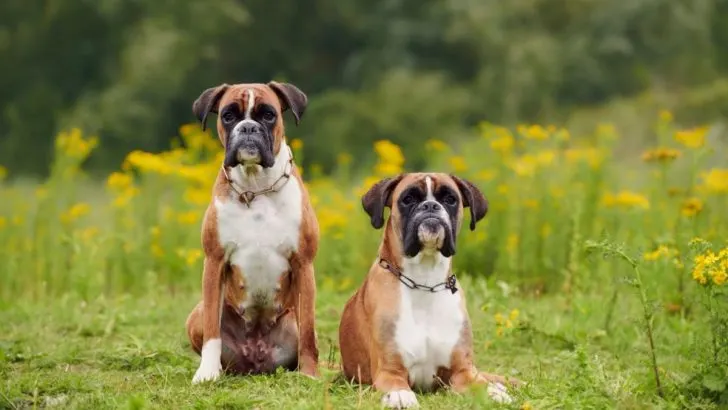Perspective pet parents and new owners should know that having a Boxer is like inviting a whirlwind into your home — an adorable, slobbery whirlwind with relentless energy. It might or might not be why they are among the most popular dog breeds in the United States.
From the moment these little beasts stumble into your life with their big paws and boundless enthusiasm, watching them grow will be one wild ride for you and your family members.
But how do you keep track of that little thing, its rapid growth, bursts of energy, and occasional bouts of stubbornness?
Enter the Boxer Growth Chart — your go-to resource and the right place for getting a good idea for the Boxer weights & heights by breed standard set by the American Kennel Club (AKC).
Whether you’re a novice Boxer parent or a seasoned pro, monitoring your pup’s growth is equal parts science, fun, and occasional surprise.
From the teetering puppy stage, where every step is an adventure, to sturdy adults who think they are lap dogs, the following charts will offer you peace of mind through each phase.
So grab your tape measure and a camera for those can’t-even-handle-it moments, and let’s track the best things about the growth of your furry tornado.
Understanding Male And Female Boxers
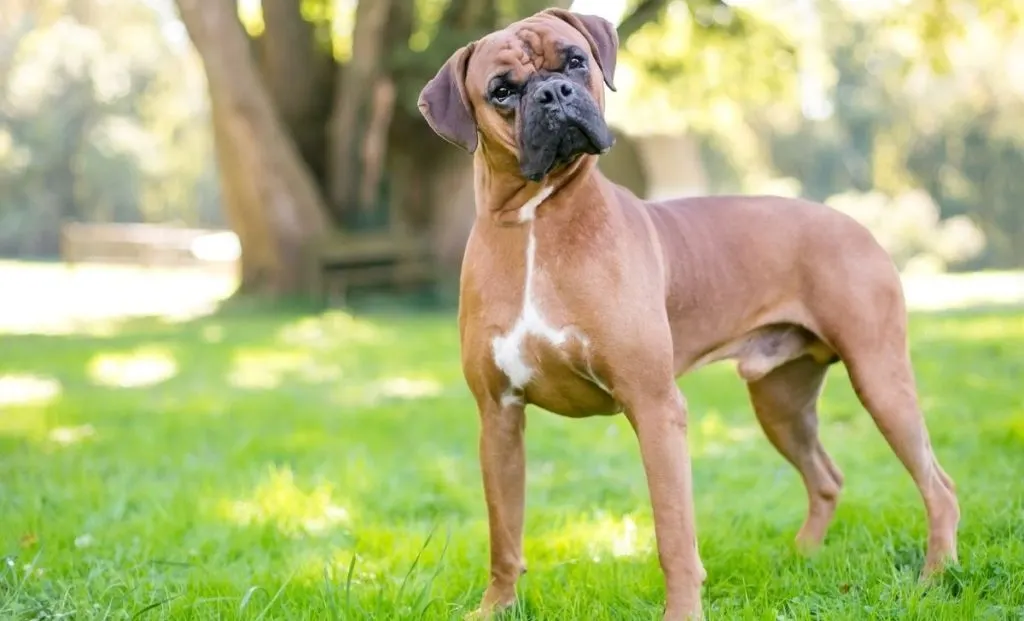
Observing how male and female Boxers develop differently as these playful and alert dogs grow is fascinating.
While both genders share the breed’s characteristics, there are some distinct differences in their growth patterns and physical attributes, such as average weights or body size.
A general rule observed in all dog breeds is that males are usually bigger than their female counterparts.
Male Boxers
Male Boxers typically experience a significant growth spurt between 6 and 9 months.
On average, they reach a height of 23 to 25 inches at the shoulder and can weigh between 65 and 80 pounds.
Males of the breed tend to have a more muscular and robust build, with broader chests and shoulders that give them a heavier look than females.
Let’s look at the following numbers, all following the purebred dog breed standard set out by the American Kennel Club (AKC).
Male Boxer Weight Chart
The following chart provides an estimate of typical weight for male Boxers at different stages of growth.
Individual weights might vary based on genetics, diet, and overall health.
| Age | Weight (lbs) | Weight (kg) |
|---|---|---|
| Newborn | 1-2 | 0.45-0.9 |
| 1 Week | 2-3 | 0.9-1.4 |
| 2 Weeks | 3-4 | 1.4-1.8 |
| 3 Weeks | 4-5 | 1.8-2.3 |
| 4 Weeks | 5-7 | 2.3-3.2 |
| 6 Weeks | 10-12 | 4.5-5.4 |
| 2 Months | 16-20 | 7.3-9.1 |
| 3 Months | 22-26 | 10-11 |
| 4 Months | 30-35 | 13.6-15.9 |
| 5 Months | 35-40 | 15.9-18.1 |
| 6 Months | 41-48 | 18.6-21.8 |
| 7 Months | 48-55 | 21.8-24.9 |
| 8 Months | 50-57 | 22.7-25.9 |
| 9 Months | 52-60 | 23.6-27.2 |
| 10 Months | 54-62 | 24.5-28.1 |
| 11 Months | 56-64 | 25.4-29 |
| 1 Year | 58-66 | 26.3-29.9 |
| 1.5 Years | 60-68 | 27.2-30.8 |
| 2 Years | 62-70 | 28.1-31.7 |
| 3 Years | 65-80 | 29.5-36.3 |
Male Boxer Height Chart
| Age | Weight (lbs) | Weight (kg) |
|---|---|---|
| Newborn | 3-4 | 7.6-10.2 |
| 1 Week | 3.5-4.5 | 8.9-11.4 |
| 2 Weeks | 4-5 | 10.2-12.7 |
| 3 Weeks | 4.5-5.5 | 11.4-14 |
| 4 Weeks | 5-6 | 12.7-15.2 |
| 6 Weeks | 6-8 | 15.2-20.3 |
| 2 Months | 8-10 | 20.3-25.4 |
| 3 Months | 10-12 | 25.4-30.5 |
| 4 Months | 12-14 | 30.5-35.6 |
| 5 Months | 14-16 | 35.6-40.6 |
| 6 Months | 16-18 | 40.6-45.7 |
| 7 Months | 18-19 | 45.7-48.3 |
| 8 Months | 19-20 | 48.3-50.8 |
| 9 Months | 20-21 | 50.8-53.3 |
| 10 Months | 21-22 | 53.3-55.9 |
| 11 Months | 22-23 | 55.9-58.4 |
| 1 Year | 23-24 | 58.4-61 |
| 1.5 Years | 23.5-24.5 | 59.7-62.2 |
| 2 Years | 24-25 | 61-63.5 |
| 3 Years | 24-25 | 61-63.5 |
Male Boxers typically reach their full height by about 1.5 to 2 years, though they may continue to fill out in muscle mass and weight until about three years old.
This chart provides an estimate of typical height at different stages of growth, but individual dogs may vary.
Female Boxers
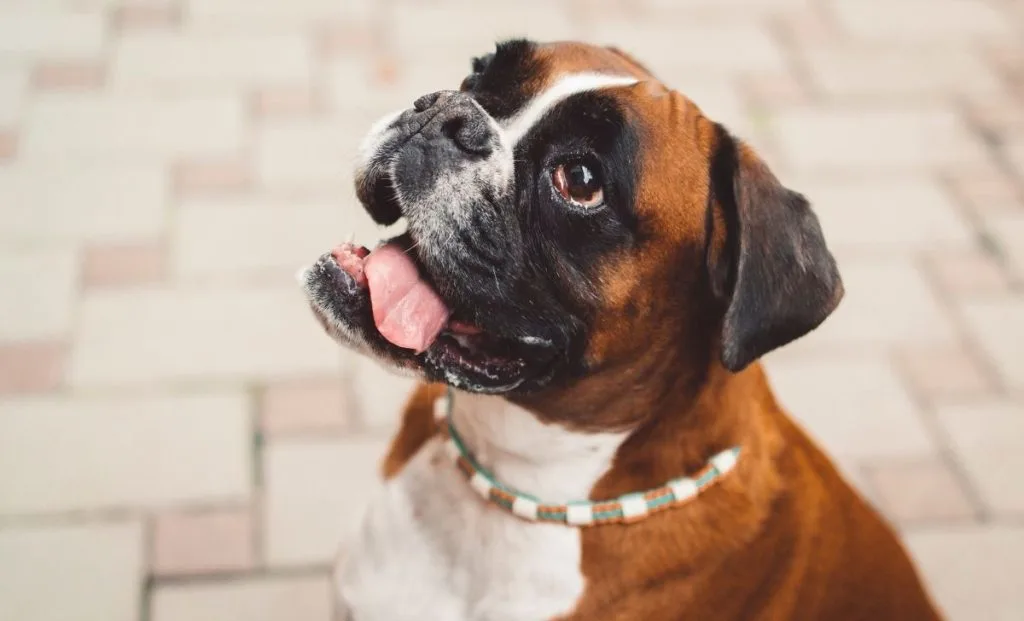
Female Boxers, conversely, do grow quickly yet may finish growing some months earlier, often between 12 to 16 months.
Typically, they stand at 21.5 to 23.5 inches and weigh around 50 to 65 pounds.
They tend to be lighter and lankier than males, with a slimmer chest and a more refined overall appearance.
Female Boxer Weight Chart
The following chart provides an estimate of typical weight for female Boxers at different stages of growth.
Individual weights might vary based on genetics, diet, and overall health.
| Age | Weight (lbs) | Weight (kg) |
|---|---|---|
| Newborn | 1-2 | 0.45-0.9 |
| 1 Week | 2-3 | 0.9-1.4 |
| 2 Weeks | 3-4 | 1.4-1.8 |
| 3 Weeks | 4-5 | 1.8-2.3 |
| 4 Weeks | 5-7 | 2.3-3.2 |
| 6 Weeks | 9-11 | 4.5-5.4 |
| 2 Months | 14-18 | 7.3-9.1 |
| 3 Months | 20-25 | 10-11 |
| 4 Months | 25-30 | 13.6-15.9 |
| 5 Months | 28-33 | 15.9-18.1 |
| 6 Months | 32-37 | 18.6-21.8 |
| 7 Months | 36-41 | 21.8-24.9 |
| 8 Months | 38-43 | 22.7-25.9 |
| 9 Months | 40-45 | 23.6-27.2 |
| 10 Months | 42-47 | 24.5-28.1 |
| 11 Months | 44-49 | 25.429 |
| 1 Year | 46-51 | 26.3-29.9 |
| 1.5 Years | 48-55 | 27.2-30.8 |
| 2 Years | 50-60 | 28.1-31.7 |
| 3 Years | 55-65 | 29.5-36.3 |
Female Boxer Height Chart
| Age | Weight (lbs) | Weight (kg) |
|---|---|---|
| Newborn | 3-4 | 7.6-10.2 |
| 1 Week | 3.5-4.5 | 8.9-11.4 |
| 2 Weeks | 4-5 | 10.2-12.7 |
| 3 Weeks | 4.5-5.5 | 11.4-14 |
| 4 Weeks | 5-6 | 12.7-15.2 |
| 6 Weeks | 6-8 | 15.2-20.3 |
| 2 Months | 8-9.5 | 20.3-24.1 |
| 3 Months | 9.5-11 | 24.1-27.9 |
| 4 Months | 11-12.5 | 27.9-31.8 |
| 5 Months | 12.5-14 | 31.8-35.6 |
| 6 Months | 14-15.5 | 35.6-39.4 |
| 7 Months | 15.5-17 | 39.4-43.2 |
| 8 Months | 17-18.5 | 43.2-47 |
| 9 Months | 18.5-19.5 | 47-49.5 |
| 10 Months | 19-20 | 48.3-50.8 |
| 11 Months | 20-21 | 50.8-53.3 |
| 1 Year | 21-22 | 53.3-55.9 |
| 1.5 Years | 21.5-22.5 | 54.6-57.2 |
| 2 Years | 22-23 | 55.9-58.4 |
| 3 Years | 22-24 | 55.9-61 |
Female Boxers typically reach their full height by about 1.5 to 2 years, although they may continue to fill out in muscle mass and weight until about three years old.
This chart provides an estimate of typical height at different stages of growth, but individual dogs may vary.
Difference In Personality
Apart from these physical differences, there are subtle differences in their personalities and behaviors.
Males exhibit dominant behavior frequently while being territorial, whereas females can be nurturing and protective, especially when they have puppies.
However, all dogs are different, so these traits will not apply uniformly across the breed; training them to know right from wrong through socializing is critical to molding any Boxer into its true self.
How Fast Do Boxer Puppies Grow
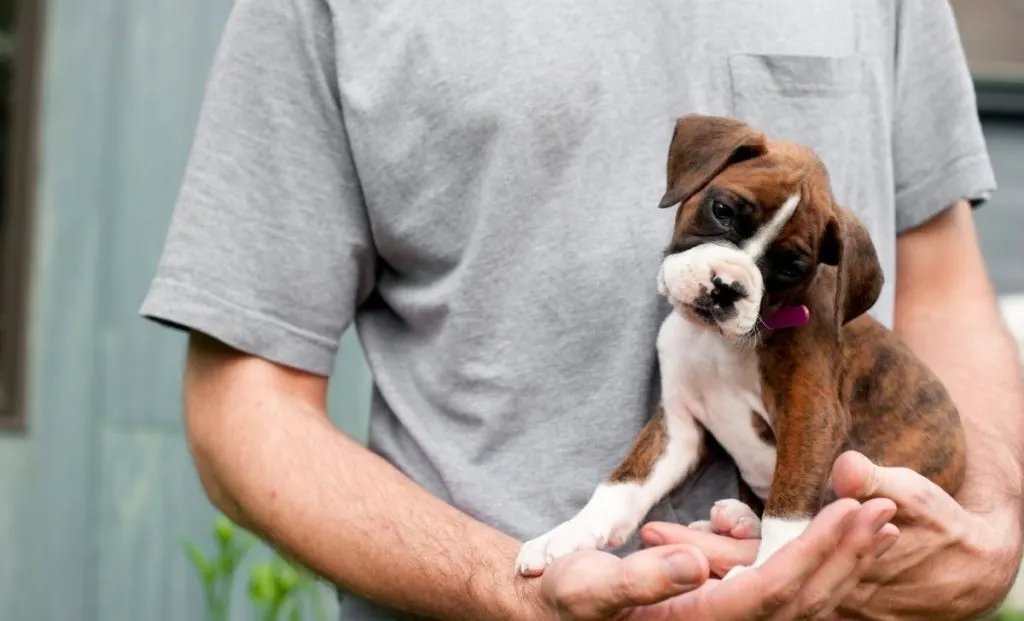
In the first six months of their lives, Boxer puppies experience rapid growth.
On average, they reach 75% of their adult height by this time. Their growth rate slows, and they typically reach their full height between their first year and 15 months old.
Nevertheless, they continue filling out and gaining muscles until about 18-24 months old.
Health Problems Associated With Growth
Several health conditions related to growth in Boxer dogs exist.
The first and most common one is hip dysplasia, where there is abnormal development or formation of bone joints, especially at hips, often causing arthritis, which leads to pain during movement, among other symptoms like limping on the affected leg(s).
Then we have the dreaded cardiomyopathy (heart disease) thankfully detected early through regular checkups by vets.
Last but not least we have hypothyroidism, which affects metabolism rate, hence general growth.
Boxer Puppies And Skin Issues
These pups are known for their short and sleek fur with a few recognized colors. You can read more about Boxer colors here.
So we have white Boxers (and Boxers with white markings or an entire white underbelly), fawn Boxers, and brindle Boxers (Boxers with black stripes).
They have some issues like allergies and dermatitis, but there is nothing that regular vet checks and a balanced diet can help manage.
However, noticing a lackluster coat on your Boxer can point toward an underlying health issue.
Optimal Diet For Growth Support
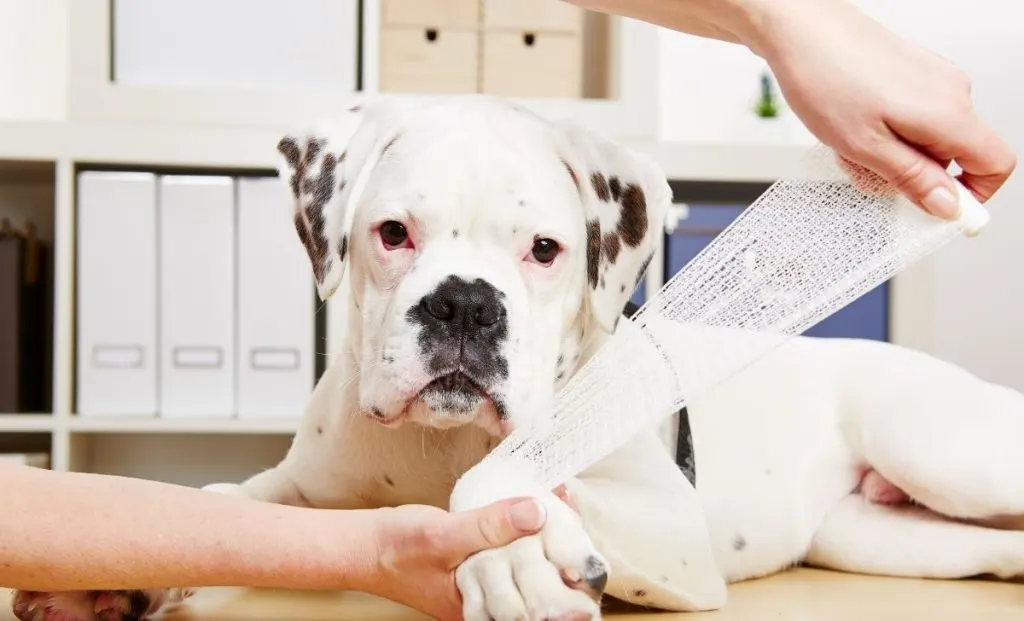
To ensure your Boxer puppy grows well in height, weight, and overall health, you must give it a balanced diet or ideal food explicitly designed for its age (puppyhood), size (large breed), activity level, etc.
Recommended food types include commercial brands labeled “complete” or “balanced,” meeting all necessary nutritional standards set out by the Association of American Feed Control Officials (AAFCO).
It would help if you fed them three times daily until six months old, then switched to two meals per day, monitoring their weight closely so they don’t become obese, which might lead to other medical complications.
Factors Influencing Boxer Growth
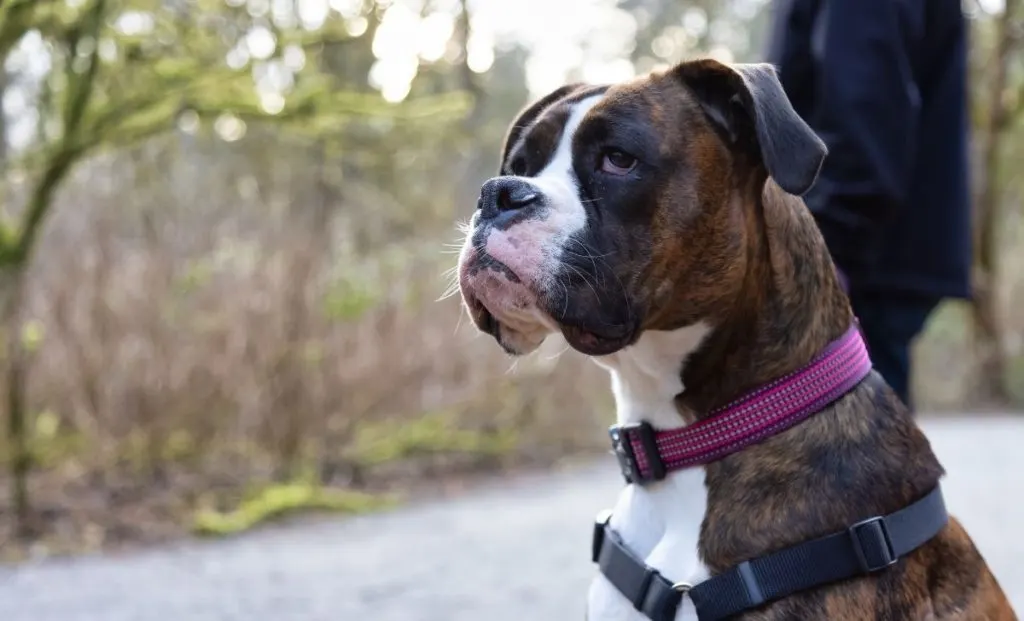
Boxers are a dynamic and muscular breed known for their fun-loving and loving disposition.
What they become in later life is greatly influenced by several essential factors as they transform from playful pups to strong, faithful adults.
These elements must be understood so that you can help your Boxer reach its maximum potential.
Every portion has a role, from genes and nutrition through exercise to healthcare—all are important for the mental and physical soundness of the pet.
The better care you take on these points, the healthier your Boxer will grow and the more he will thrive among your loved ones.
Nutrition
A well-functioning nutritional system is the most pivotal factor for healthy growth and development in Boxers.
A balanced diet of high-quality proteins, fats, vitamins, and minerals promotes rapid growth and building strong muscles and bones.
Adjust feeding times as they develop so you don’t overfeed but still give sufficient amounts.
Exercise
Boxers are a very energetic and lively breed. They need regular exercise to keep them healthy physically and mentally.
Regular exercise helps grow strong muscles, coordination, and overall fitness. Running, fetching, or agility training are great activities to keep a Boxer active and fit.
However, care must be taken not to over-exercise young puppies as their bones and joints are still developing and can be easily injured.
Proper exercise frequently supports their development while preventing behavioral problems.
Socialization and Training
A great Boxer age for socialization is DAY ONE.
From an early age, socialize with your female or male Boxer puppy while command training it because this will significantly affect its character later in life.
Encourage positive interaction between people, young children, or other animals, including exposing them to different environments; this helps shape their behavior towards individuals around them.
However, without proper training, some behavioral issues, such as aggression, might make them grow into bad-tempered adults, so they must undergo this process while still young.
Structured training sessions should also include socializing skills, which help build Boxers’ confidence when meeting new friends and make them more friendly pets around humans.
Genetics
Genes determine Boxers’ growth, size, and overall health.
As with humans, specific characteristics such as physical appearance, behavior, or attitude can be passed down from one generation to another.
This means parents pass on some traits or features to their children, including temperament traits and probable sickness predispositions. Therefore, responsible breeding ensures good development while minimizing genetic diseases.
Even body formation may be attributed solely to the genetic blueprint; therefore, selecting an individual from a healthy stock bred by reputable breeders committed to achieving variety through careful selection only would not hurt.
This will guarantee strong, robust animals free from chronic ailments throughout their lives.
Knowing this allows one to plan and prevent problems before they occur, thus saving time and money during treatment procedures undertaken later on when signs start showing. In addition, it ensures that the dog always leads a happy, healthy life.
Also, a more accurate estimate of your pup’s growth can be provided by his breeder since your puppy will follow the growth patterns of its parents.
Health Screening
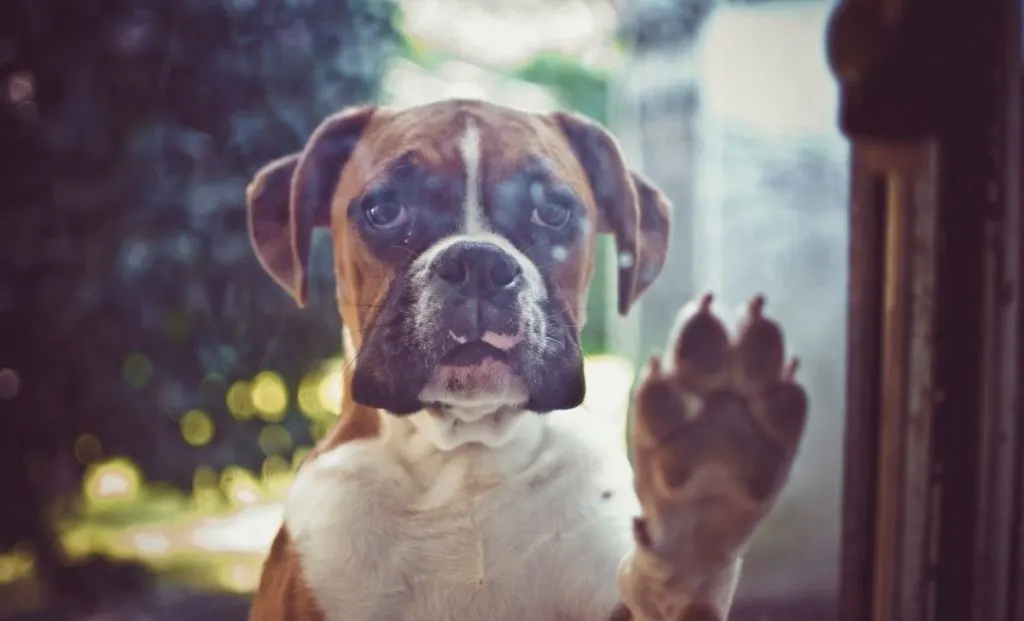
Regular visits to the vet are essential in monitoring your Boxer’s growth and catching any health issues before they become serious.
Vaccines, deworming tablets, and preventive treatments for parasites all contribute to general wellbeing.
Boxers are at higher risk of contracting certain diseases, such as hip dysplasia, cardiomyopathy, or hypothyroidism, hence the need for proactive healthcare measures.
Routine health checks, such as heart evaluations or joint examinations, can help detect these conditions early enough for effective management, thus ensuring that your Boxer lives healthier.
Environment
The environment where one grows up dramatically affects one’s development stages.
A stable, loving home with lots of space for playing around helps in physical and mental growth.
On the contrary, stressful or neglectful surroundings may stunt growth, leading to abnormal behaviors later in life; therefore, it would be better to provide safe environments filled with many things for our boxers to discover themselves through.
Mental Stimulation
Mental exercise is just as crucial for Boxers as physical exercise.
These dogs are intelligent, so they require activities that keep their minds occupied to prevent boredom and destructive behaviors.
Puzzle toys, obedience training classes, and interactive games are some of the ways we can engage their mental faculties.
Routinely doing this ensures they stay happy all around.
Hormonal Changes
Abnormal changes during puberty between six months and two years old can affect Boxer’s growth and behavior.
A lot of transformation occurs at this stage, both physically and emotionally; thus, one should wait until after these age brackets before neutering or spaying them since it might alter growth patterns, among other things.
So, talk with your vet about when such procedures should be best based on individual dogs’ needs for healthy development.
Hydration
Proper hydration significantly aids the Boxer’s growth process and overall health improvement.
Water is critical during digestion and helps absorb nutrients better, creating radiant skin and a shiny coat appearance.
Therefore, clean drinking water should always be available, especially after exercise or when it gets hot outside, because dehydration may weaken an active lifestyle.
Sleep
Sleep is necessary for Boxers’ well-being.
This is particularly crucial during puppyhood when owners must set aside enough hours to ensure adequate rest.
Lovely, calm sleeping surroundings should be provided, enabling Boxers to have a quality sleep necessary for muscle formation, brain development, and general body fitness, which is part of their journey towards total growth.
To Sum It All Up
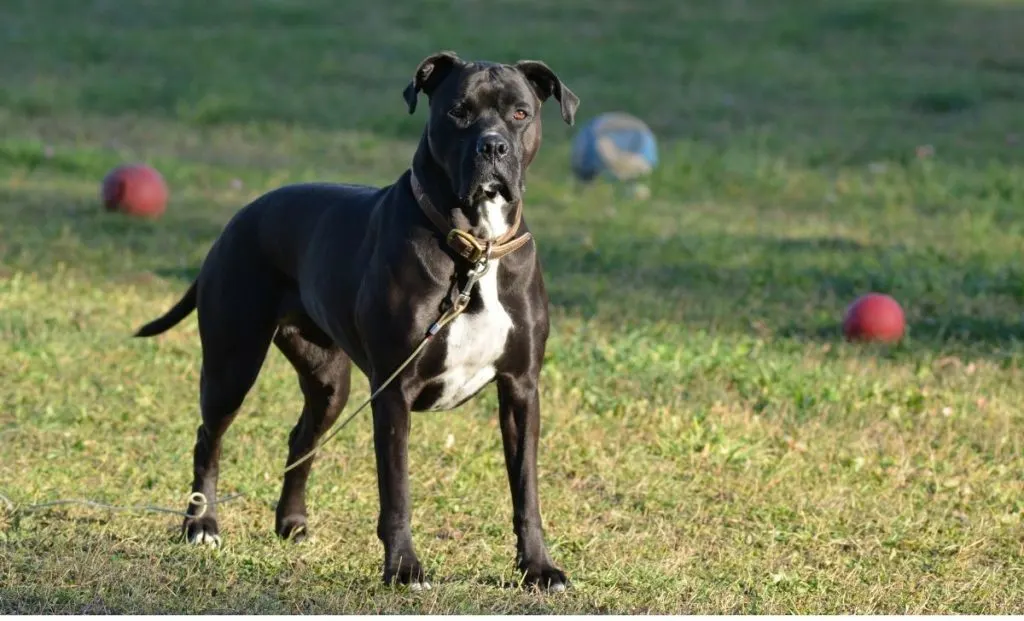
The breed name “Boxer” is supposedly derived from the breed’s tendency to play by standing on its hind legs and “boxing” with its front paws.
Another fun fact is that these dogs were usually cropped and docked in the past, but animal rights groups pressured veterinary associations to ban the practice. We have a bomb article about cropping and docking that you should check out.
The breed was introduced to Europe in the late 19th century, while the first Boxer came to the US in the early 20th century.
As you watch your Boxer grow from a playful puppy into a majestic adult, you’ll realize the incredible journey you’ve both undertaken.
Each stage of their development brings new challenges and joys, from the excitement of their first bark to the pride of seeing them mature into strong, loyal companions.
Whether they’re bounding through the yard with endless energy or snuggling up beside you, your Boxer’s growth story is filled with moments to cherish.
Here’s to the joy of witnessing your Boxer’s incredible transformation in your new family and the many adventures yet to come!
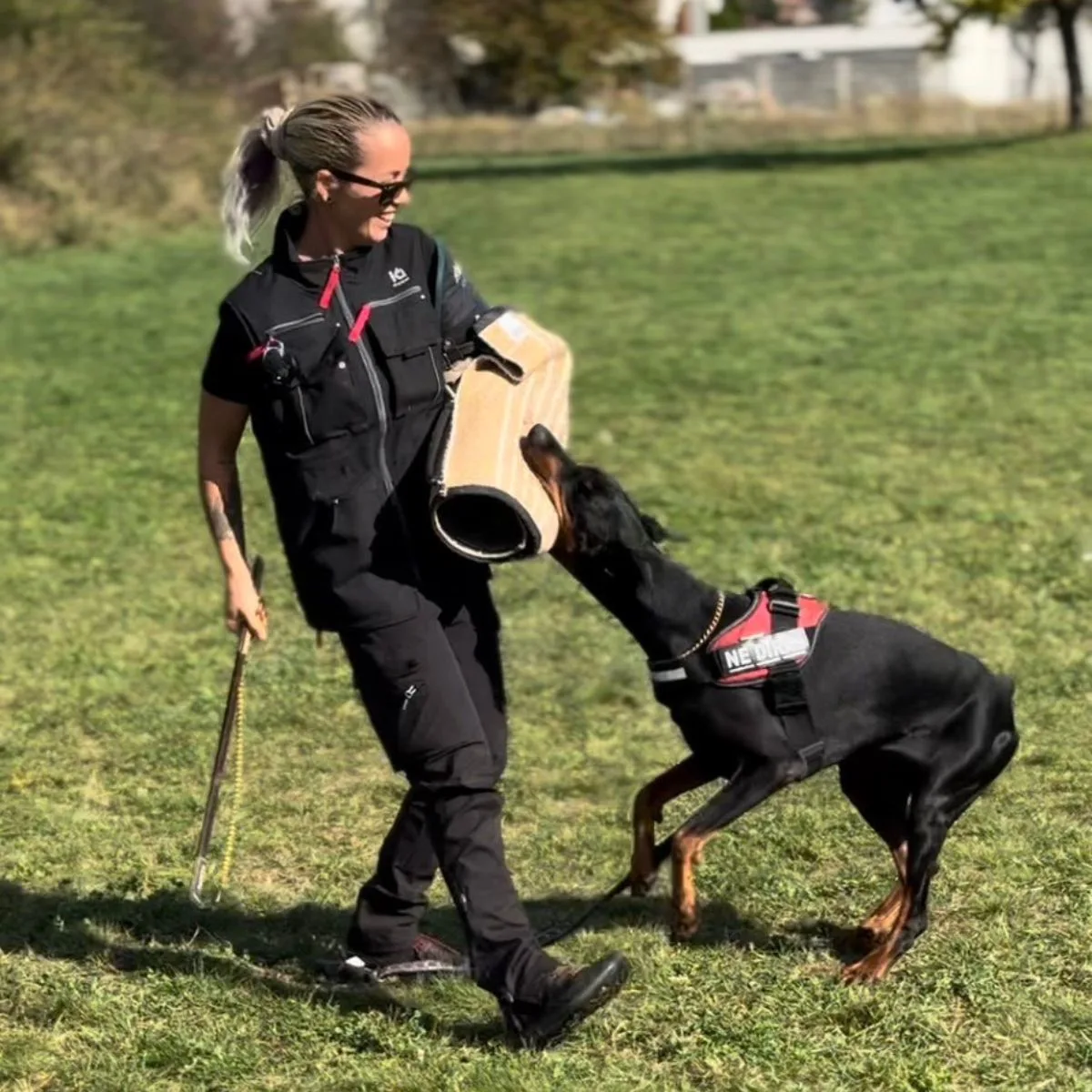
Nandina has been a lifelong dog owner and enthusiast. She shared her home with multiple breeds, including Giant Schnauzers, Cane Corsos, and Huskies. Currently, she is raising a three-year-old rescue and a working-line German Shepherd puppy.
Actively engaged in IGP dog sports for two years, Nandina is a certified instructor for basic obedience and socialization. She works as a trainer in her local dog sports club, and in her spare time, she handicrafts biothane gear for dogs.
